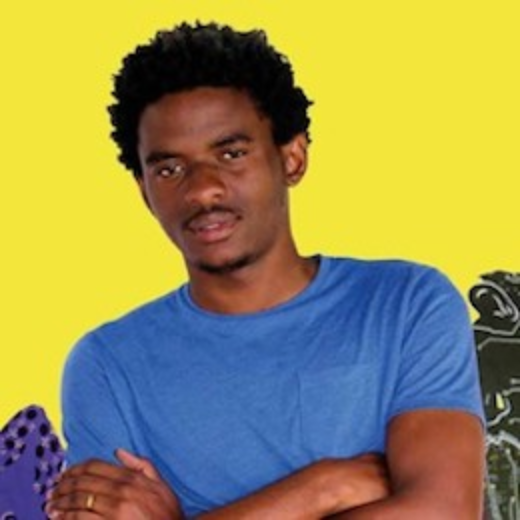Focus on Eddy Kamuanga Ilunga
[2021年08月10日]Revealed by the Saatchi gallery in 2015, Eddy Ilunga KAMUANGA (born in 1991) is one of the leading figures of new Congolese painting. Born in Kinshasa, Africa’s third largest city, he immersed himself as a child in American comics and assiduously copied Japanese mangas. The young boy’s imagination quickly learnt to travel between cultures and he developed a passion for drawing that remained with him as he grew up. As a young man, he enrolled at the Institute of Fine Arts then joined the Academy of Fine Arts in Kinshasa (2010) for a few months only because he found the cursus too suffocating. He found the energy and freedom he craved with other young Kinshasa artists with whom he created the M’Pongo studio (“eagle” in Lingala). Together they worked and exhibited, generating their own creative scene in the heart of contemporary Kinshasa.
Congolese history
 Eddy Kamuanga’s first paintings featured flip-flops… a tribute to his mother who sold them and a way of evoking the memory of the victims of rubber exploitation during the colonization of the Congo. With time, he increasingly immersed himself in his country’s history… that of the Mangbetu, whose elongated skulls are a sign of distinction and beauty, and that of the exploitation of coltan, the famous “strategic mineral” essential for the manufacture of smartphones, computers and electric cars, of which the Democratic Republic of Congo is the world’s largest exporter. He also discovered the extremely heavy and tragic human cost of exploiting his country’s resources.
Eddy Kamuanga’s first paintings featured flip-flops… a tribute to his mother who sold them and a way of evoking the memory of the victims of rubber exploitation during the colonization of the Congo. With time, he increasingly immersed himself in his country’s history… that of the Mangbetu, whose elongated skulls are a sign of distinction and beauty, and that of the exploitation of coltan, the famous “strategic mineral” essential for the manufacture of smartphones, computers and electric cars, of which the Democratic Republic of Congo is the world’s largest exporter. He also discovered the extremely heavy and tragic human cost of exploiting his country’s resources.
And so it was that Kamuanga’s early style emerged, dealing with essential historical / social themes and depicting characters whose skin is tattooed with electronic circuits. Subjects who often appear dejected and listless under the bright colors of their traditional clothing. Sophisticated compositions, large dimensions, attractive cosmopolitanism, Kamuanga’s canvases are pictorially impressive while questioning the influence of globalization on African identity and its corollary, the loss of historical reference and the consignment to oblivion of traditional cultures.
Dakar – London – New York
Noticed in 2014 at the Off of the Dak’art Biennale, his work began to emerge in London in 2015 where it elicited considerable enthusiasm, first at the Saatchi Gallery and then at the African art fair 1:54. The following year, the October gallery presented other works by the African artist in London, then at the Armory Show in New York, where the Financial times used his canvas Lost to illustrate its article “The Best of New York Armory 2016”. Kamuanga was just 25 years old and his success was only just beginning. In the latter half of the decade important public collections acquired his works and the growing demand from private international collectors resulted in lively bidding at auctions. The market for his work gradually tightened, so much so that his paintings sell today for ten times what they fetched four years ago!
Already in 2018, the work Mangbetu (exhibited at the Saatchi gallery three years earlier) multiplied its high estimate by five (fetching $92,000 at Sotheby’s London). In 2020, he was again in the limelight after attracting the highest bid in Christie’s online Contemporary Art auction ($155,000 for Ko Bungisa Mbala Mibale). His latest auction record was hammered in April 2021 and reached $165,500, double its high estimate at Phillips in London (Fragile) where demand for his work is clearly spirited, to say the least.
This article is published in Dyptik magazine.




 0
0
